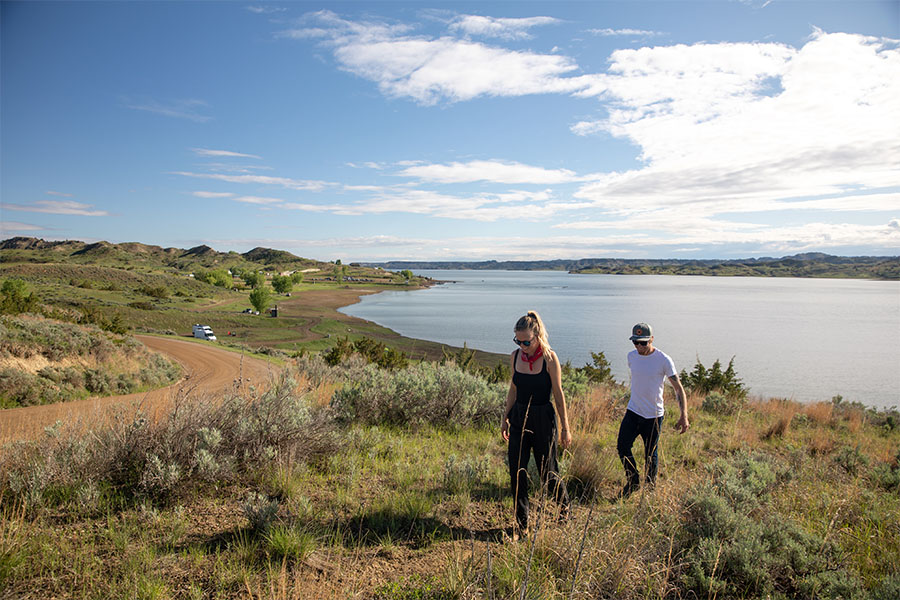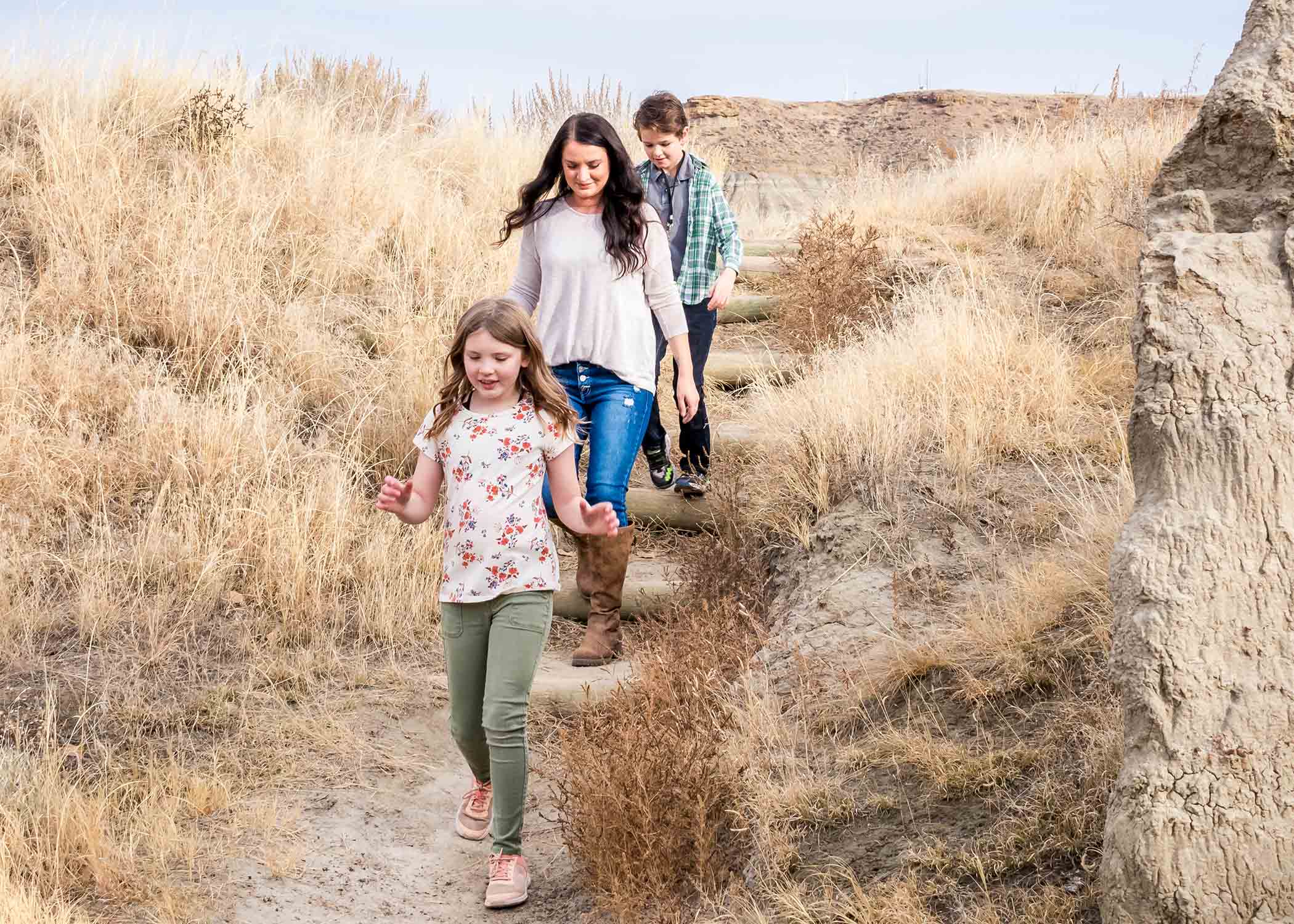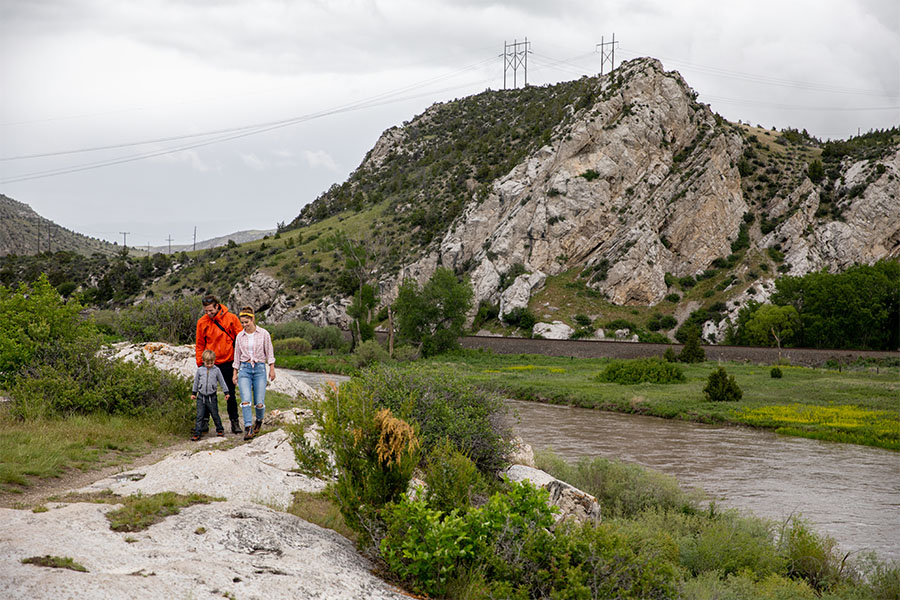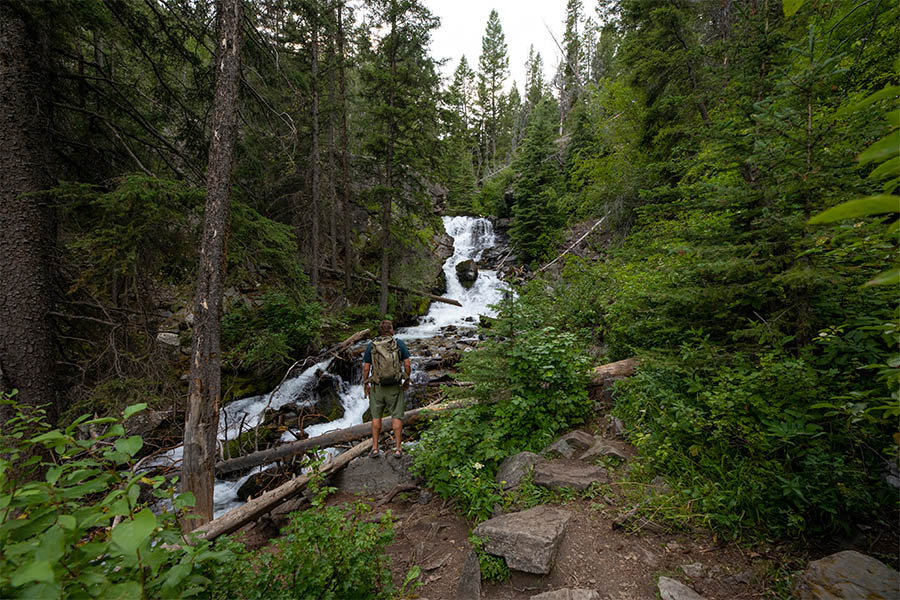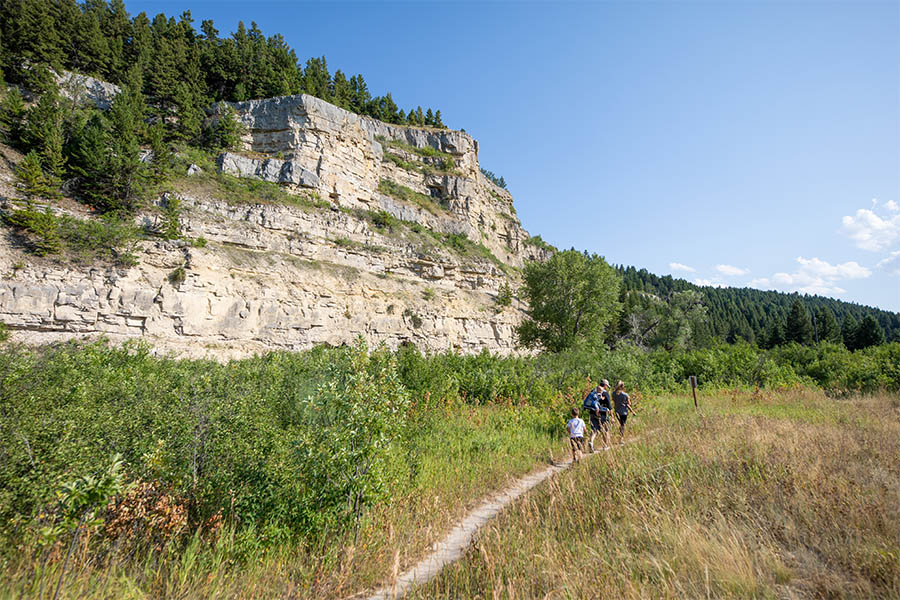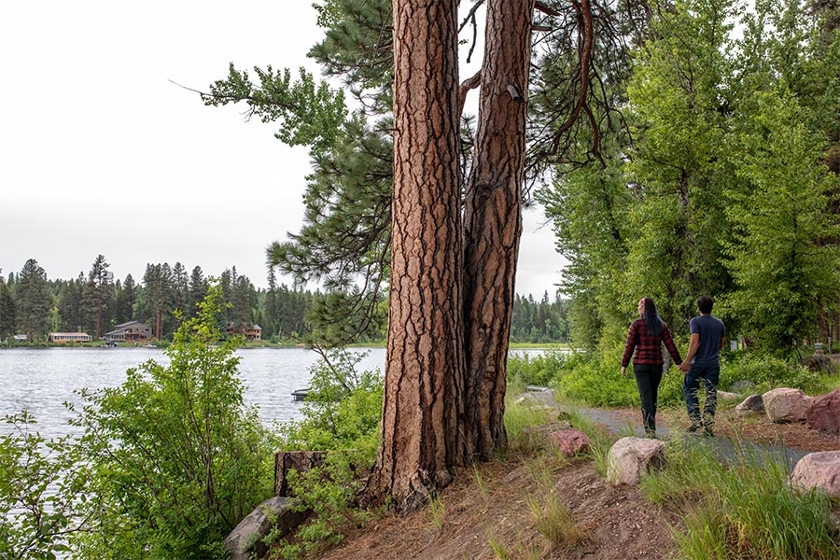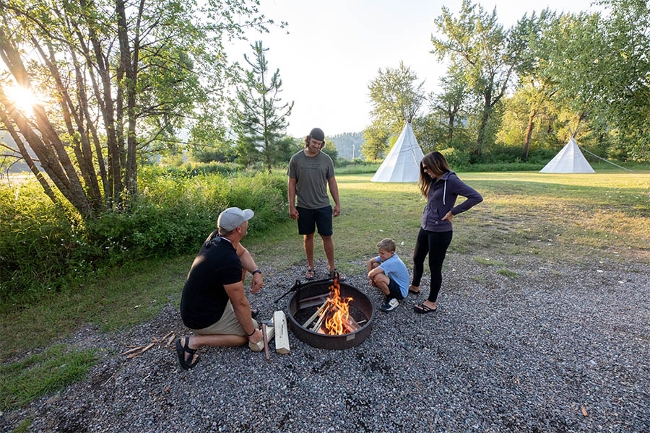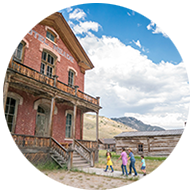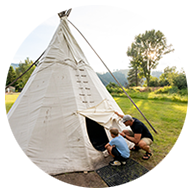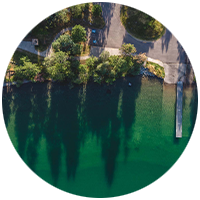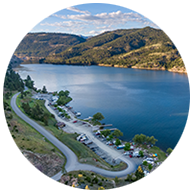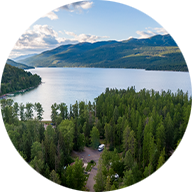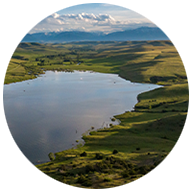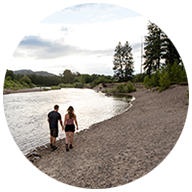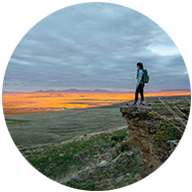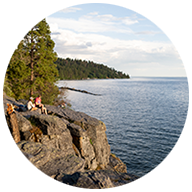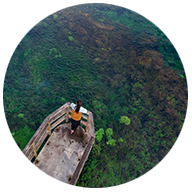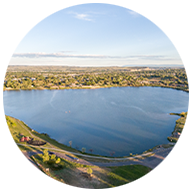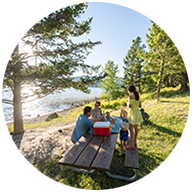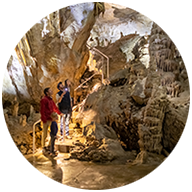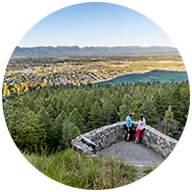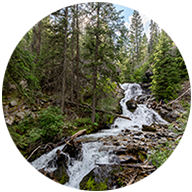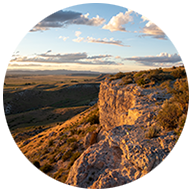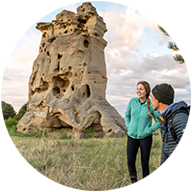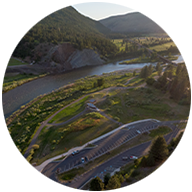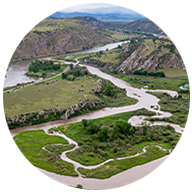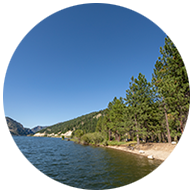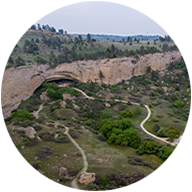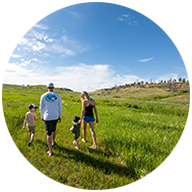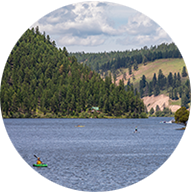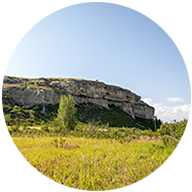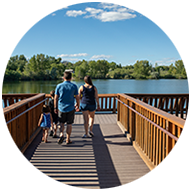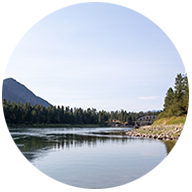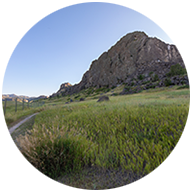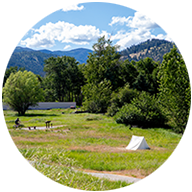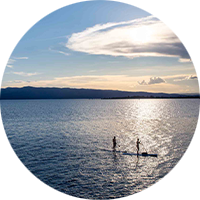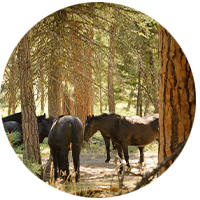Wildlife Management Areas are fantastic places to hit the trail and enjoy the natural beauty of Montana.
View this map to find Wildlife Management Areas with hiking.
Hiking is a great way to experience all the sights, sounds, and smells of the outdoors. Take a few precautions so you and your family can thoroughly enjoy the adventure.
-
Planning your trip - Plan your trip with a good topographical map or guide book. Know the terrain, elevation changes, and any crossroads you will encounter. Carry a current trail map with you and know how to read it.
-
Hike with a Companion — Remember there is safety in numbers. Group hikes are a great way to protect yourself from hiking dangers and they are more fun. It's safest to hike with at least one companion. If you plan to hike into a remote area, have a minimum of four people in your group. If someone is hurt, someone else can stay with the person who’s hurt while two others go for help.
-
Let someone back at camp or at home know where you are going and when you plan on returning — Leave a copy of your itinerary with a family member or friend. Include details like the make, year, and license plate of your car and when you plan to return. Also include emergency contact information for the ranger station or other agency that might be called on by a friend or family member to check on your welfare or reach you in case of an emergency. Know in advance the location of the nearest telephone, park office, or ranger station in case an emergency does occur on the trip.
-
Footwear — Wear properly fitting shoes with good ankle support. Slick leaves on trails have been known to cause fractured ankles. Never try to break in new shoes on a long hike. Take along extra socks (not cotton) to avoid blisters.
-
Compass — Take along a good compass and know which direction you should be heading.
-
Clothing — Always wear appropriate clothing for trail and weather conditions. In changing weather conditions, dress in lightweight layers.
-
Wildlife — Be aware of possible encounters with wild animals and treat any encounters with extreme caution.
-
Emergency signaling devices — Pack emergency signaling devices and find out the location of the nearest ranger station or park office in case of an emergency. Be prepared to send distress signals (with a flashlight or using the sun’s rays with a shiny object such as a small mirror).
-
Drinking water — Take plenty of drinking water—a minimum of two quarts per person per day. Leave stream, river, and lake water for the park wildlife. Although it looks clean and refreshing, mountain stream water can make you ill. Water is heavy to carry, but thirst on the trail is a hazard. Take a tip from athletes: before your hike, drink some water so you’re well hydrated and energized. Never drink your total supply between refills. All water from the backcountry should be treated either by filtering or boiling. Expect backcountry water sources to be unavailable and have a contingency plan in that event.
-
Stay on trails — Cutting across switchbacks erodes the hillside and eventually destroys the trail. Plus, walking off-trail increases your chance of suffering an injury or getting lost.
-
Watch your footing — Think about your footing while traveling near cliffs. Trees and bushes can’t always be trusted to hold you. Stay on developed trails or dry, solid rock areas with good footing. Unless you are absolutely certain of its thickness, it’s best not to walk across ice.
-
Hiking with dogs — If pets are allowed where you will be hiking, be sure to keep pets on leashes in restricted areas. Bring water for your pets and make sure they have nametags. Watch for injuries to your dog’s footpads in rocky areas, on ice, or in extremely hot terrain.
What you take with you on your camping trip will depend on where you're going and how long you plan to be away. We all think of the obvious gear we need to go camping, but remember to take these essentials to make your trip safer and more comfortable.
-
Plenty of water (and purification tablets or filters for the backcountry)
-
Small first aid kit (bandages for blisters)
-
Sunscreen
-
Insect repellant
-
Basic survival kit with matches, signal mirror, etc.
-
High energy food
-
A whistle
-
Rain gear and other seasonal weather clothing
The safest, and most comfortable, way to dress in the outdoors in Montana, is in lightweight layers. This gives you the ability to add or remove layers in response to changing conditions, and lightweight layers are generally smaller and easier to pack.
Keep in mind that dressing for outdoor activities is much different than dressing for home or short outings to the store or office. When you are recreating outdoors your clothes should allow you to move freely and comfortably. You may sweat so your clothing needs to wick the moisture away from your body to keep you dry. You also have to be prepared for changing weather conditions.
Base layer
The inner layer, worn next to the skin, is intended to keep the wearer comfortable and dry in warm conditions and retain warmth in cold conditions. This layer should be made of a material that wicks moisture away from the skin and provides insulation. Clothing options are available in a variety of thicknesses for different activities and weather conditions.
Good fabric choices for inner layer: synthetics or lightweight merino wool
Mid-layers
Mid-layer garments are intended to provide insulation and warmth when needed. This layer may vary from a lightweight shirt in warm conditions to a warm shirt and a fleece or wool pullover in cold conditions. The mid-layer or layers, may vary drastically depending on the time of year and activity level.
Good fabric choices for mid-layer(s): Synthetics or wool
Outer layer
Outer layers are used to protect the wearer from wind and precipitation. These garments are generally made from wind resistant, water resistant, or water proof fabrics. They may also add insulation.
Good fabric choices for outer layer: Synthetics
Shoes or boots
The correct shoes will depend on the activity you are doing. When you're hiking you want a boot with a good tread and good support. If you will be in cold weather you will want more insulation and possibly a water resistant or water proof boot. If you will be boating you will want a shoe that is intended to get wet, that also has good support and tread so you don't slip in the boat or while walking in the water. Many activities have shoes specific to that activity.
Socks
Your choice in socks can make or break your outting too. Like the rest of your clothing, they come in a variety of fabrics. The right socks can make the keep you warm, comfortable, and blister free.



